What is Lime? And the Difference Between Lime and Limestone?
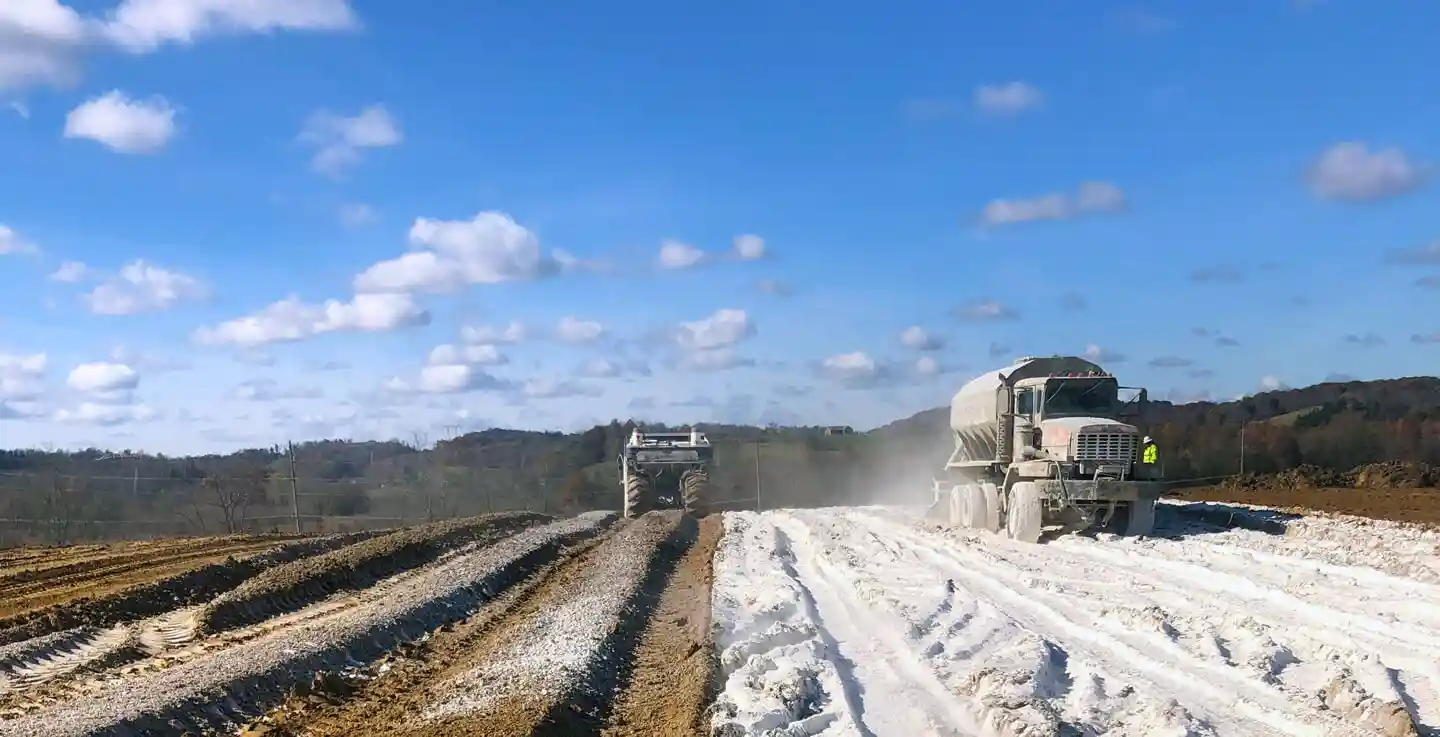
What is the Difference Between Lime and Limestone?
Lime is a versatile chemical with many uses. It is vital in the production of countless materials. Lime, or calcium oxide (CaO), is derived from high quality natural deposits of limestone, or calcium carbonate (CaCO3). Limestone is a sedimentary rock that formed millions of years ago as the result of the accumulation of shell, coral, algal, and other ocean debris. Lime is produced when limestone is subjected to extreme heat, changing calcium carbonate to calcium oxide.
What is Lime?
Lime is commonly referred to by a number of terms including quicklime, calcium oxide, high calcium lime, or dolomitic lime. All refer to the same material, lime. Dolomitic lime contains magnesium oxide (MgO) derived from the presence of magnesium carbonate (MgCO3) in the initial stone referred to as dolomitic limestone. Dolomitic limestone contains two forms of carbonate, calcium carbonate and magnesium carbonate. High calcium lime is almost pure calcium carbonate.
Let’s work together.
Uses of Lime
As early as 4000 BC the ancient Egyptians used quicklime, after mixing it with water, as a construction material for building pyramids. Today, quicklime is a widely used chemical compound. The use of lime surrounds our everyday life making the water we drink safe, the air we breathe cleaner, our steel purer and construction projects more stable. It goes into glass production, paper manufacturing, agricultural practices, chemical processes, plaster, mortar and other building materials, to name a few.
In construction applications, lime and lime-based reagents can dry wet soils to eliminate downtime, increase productivity and keep projects moving. They quickly modify weak soils to make work cleaner, safer, faster and easier. Soil modification provides an improved working platform that keeps materials coming to the job site. Lime derived products can also be used to stabilize soils providing long term, permanent strength gains. These strength gains can result in a thinner pavement layer if considered in the design saving contractors money and allowing DOT’s, General Contractors and Project owners to use funds elsewhere.
In environmental remediation applications, lime and lime-based reagents dry, solidify and fixate hazardous & non-hazardous waste streams. They adjust pH to grip heavy metals, reducing solubility. Lime derived products develop a pozzolanic matrix that prevents the mobility of metals and high pH adjustment grips heavy metals reducing solubility. Waste streams can be dried and strengthened using lime products to meet landfill (RCRA) requirements for landfill disposal.
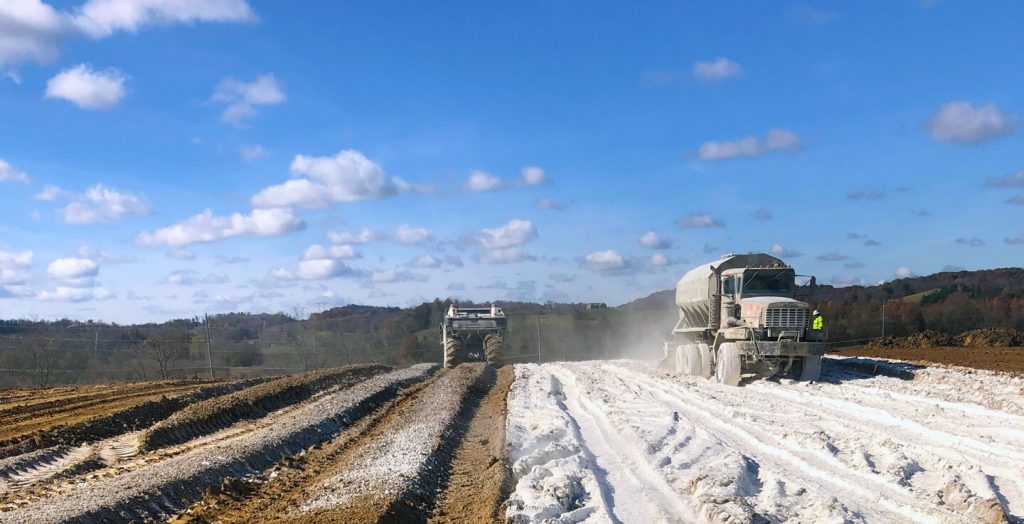
How Lime is Made
In the Beginning
Before limestone is extracted, geological and chemical analysis must first be conducted to determine if the stone of interest is acceptable for lime production. Limestone that does not meet the chemical composition requirements is directed to be used as aggregate and fillers in a number of other markets. Limestone deemed acceptable is then quarried, or mined, from the earth before it is crushed and sized.
Sizing
Once limestone has been mined, it needs to be crushed and uniformly sized to ensure the end product is a consistent product.
Calcining
Once crushed and sized, the limestone is fed into kilns where it is calcined, basically cooked, at temperatures as high as 2000 degrees Fahrenheit. During this progression the extreme heat causes the limestone to chemically release carbon dioxide (CO2). The end result is lime.
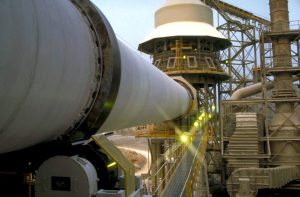
Products
Lime can be manufactured in a number of different end products.
Pebble Lime
Pebble lime, with sizes ranging from 2-inch down to ¼-inch, is used in many applications including steel manufacturers and other industrial areas as a fluxing agent or slaked as part of a larger process.
Pulverized Lime
Pulverized lime is a graded material with a controlled particle size distribution formed from crushed pebble lime.
Lime Fines
Lime fines, generally less than ¼-inch in size, are often used in construction markets. The small particle size of this quicklime product helps to increase the speed at which it can dry, modify and stabilize soils.
Lime kiln dust
Lime kiln dust a co-product of lime manufacturing, is a mix of calcium and magnesium oxides and pozzolans.
Hydrated Lime
Hydrated lime is produced when quicklime is carefully mixed with water to yielding hydrated lime (Ca(OH)2), also known as slaked lime or calcium hydroxide. This process forms a very fine white powder that is very useful in a number of applications, especially asphalt.
Quicklime slurry
Quicklime slurry is a suspension of calcium hydroxide in water. This free-flowing product offers a solution for customers requiring a liquid or if they are particularly concerned with dusting.
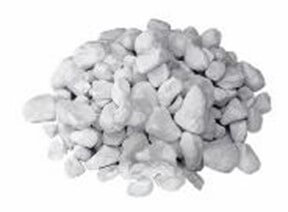
Pebble Lime
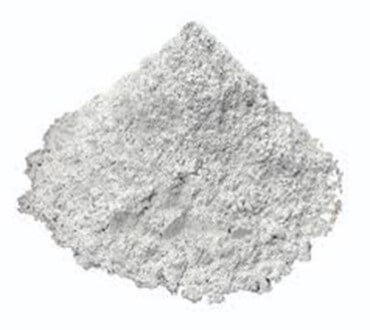
Lime Fines
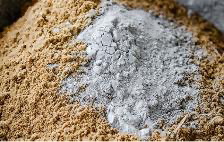
Lime Kiln Dust
Storage
There are a number of ways that lime can be stored. Depending on the volume of product needed, available space and specific job site requirements lime-based products can be stored in: silos, portable storage units called PIGS, hoppers, super sacks or 40# and 80# bags. No matter the storage, air and water are to be kept away from products as they will react with carbon dioxide and moisture.
Precautions
As with any chemical, lime needs to be treated with respect. If handled properly lime is a very safe product. There are several precautions working with lime.
Eye irritation:
Safety glasses should be worn when working with lime-based products. In dusty and/or windy conditions gasketed safety glasses or goggles should be worn.
Skin irritation:
When lime is exposed to moisture, or sweat, a very hot chemical reaction take place that could cause chemical burns. Appropriate clothing covering exposed skin is recommended.
Respiratory Irritation:
The use of a respirator can minimize breathing dust.
We’re here to help you find the best solution for your next project. Let’s get started. Give me a call at 937-641-9901.

Josh Weser
Mintek Resources
Related Posts
Understanding Soil Stabilization with Cement and Lime
Creating a strong and stable foundation is essential when constructing buildings, roads, and other infrastructure. However, not all soils are naturally suitable for construction. Some may be too wet, soft, or prone to deformation and settling, which can lead to...
A Guide to Lime Soil Stabilization Specifications
Importance and Purpose of Lime in Soil Stabilization Lime plays a crucial role in soil stabilization, which is a process used to improve soil properties. The term lime is a somewhat catch-all term for many calcium-bearing materials, so it is important to understand...
Potential Pitfalls: Applying State DOT Standards to Small Commercial Projects
As a value engineering option, the importance of soil stabilization cannot be overstated. Soil stabilization lays the groundwork for stability, ensuring that structures remain steadfast against the test of time. Crucial to this process are soil stabilization...